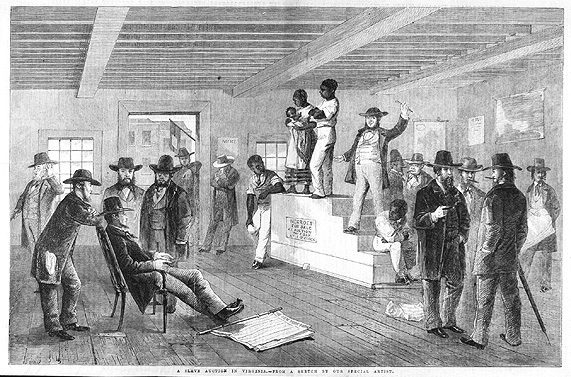 A
woodcut printed in The Little Book of Early American Crafts and Trades
(first published in 1807) illustrates the family economy at work in the
home.
A
woodcut printed in The Little Book of Early American Crafts and Trades
(first published in 1807) illustrates the family economy at work in the
home.Families in Antebellum America
 A
woodcut printed in The Little Book of Early American Crafts and Trades
(first published in 1807) illustrates the family economy at work in the
home.
A
woodcut printed in The Little Book of Early American Crafts and Trades
(first published in 1807) illustrates the family economy at work in the
home.
The
Four Seasons of Life--Middle Age: The Season of Strength
Currier & Ives, 1868
In the pre-industrial household all members of the family were
required to be productive to ensure the well being of the family. Although there
were specific roles played by men, women and children, all played some role and
all needed the others. With industrial, factory production it was increasingly
common for one or two members of the family to be the ones to go out to work and
bring home the money required to support the others.
In the early years of factory production it was not at all clear that it was
the men that should be the wage earners. In fact the industrialists were happy
to fill their factories with children and particularly women. Many
industrialists argued women were better workers than men. A social and economic
battle was fought in the early 19th century the outcome of which was the
definition of men as the primary wage earners. This battle was accompanied by a
redefinition of gender roles to comply with the above public/private separation
of life.
Men came to be associated with the public sphere and women with the private
or domestic. Interestingly as this happened, the definition of what it meant to
be a man and what it meant to be a woman began to change. Men needed to function
in the public sphere which was seen as cold and uncaring and harsh. Men came to
be defined according to this environment and needed to be tempered and softened
by the domestic sphere which was warm, accepting and nurturing. Women were
viewed as being especially outfitted to provide this kind of environment for
their children and men. Thus women were redefined as essentially moral and
religious but also soft and vulnerable and needing the protection of their
publicly oriented men. This view of men and women was invented by the 19th
century middle class and became so influential by the twentieth century that it
seemed like this the way it had always been.
"Women, Temperance Reform, and the Cult of Domesticity" from National Humanities Center
also primary resources
From Digital History: The History of Private Life

Slave Family Life from Digital History
From PBS, part of Slavery and the Making of America: The Slave Experience: Family
From the National Humanities center: The Enslaved Family
The Gilder Lehrman Center for the Study of Slavery, Resustance & Abolution
From Library of Congress: Free Black in the Antebellum Period

From History Matters: The Lowell Mill Girls go on Strike, 1836
___________________________________
Five million immigrants migrated to the United States between 1820 and 1860, which was more than the entire population of the U.S. in 1790.
The Irish were the most numerous immigrants between 1820 and 1860. Over 1.7 million Irish came to the U.S. between 1820 and 1860. Over five million Irish immigrated to America between 1820 and 1920.
But the second largest immigrant group, the Germans, also came in larger numbers between 1840 and 1860. Over 1.3 million Germans came between 1840 and 1860, fleeing poverty and desperate conditions.